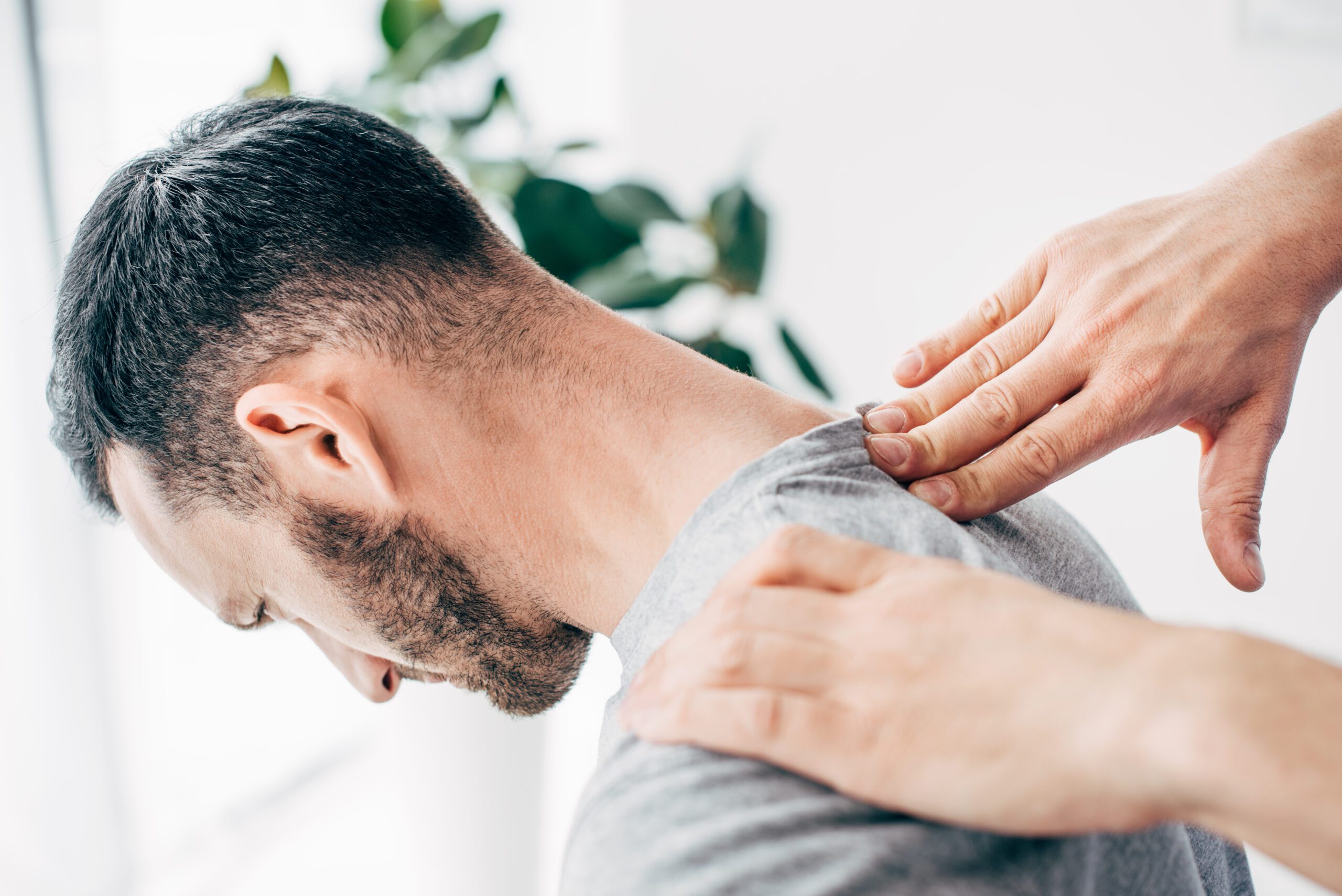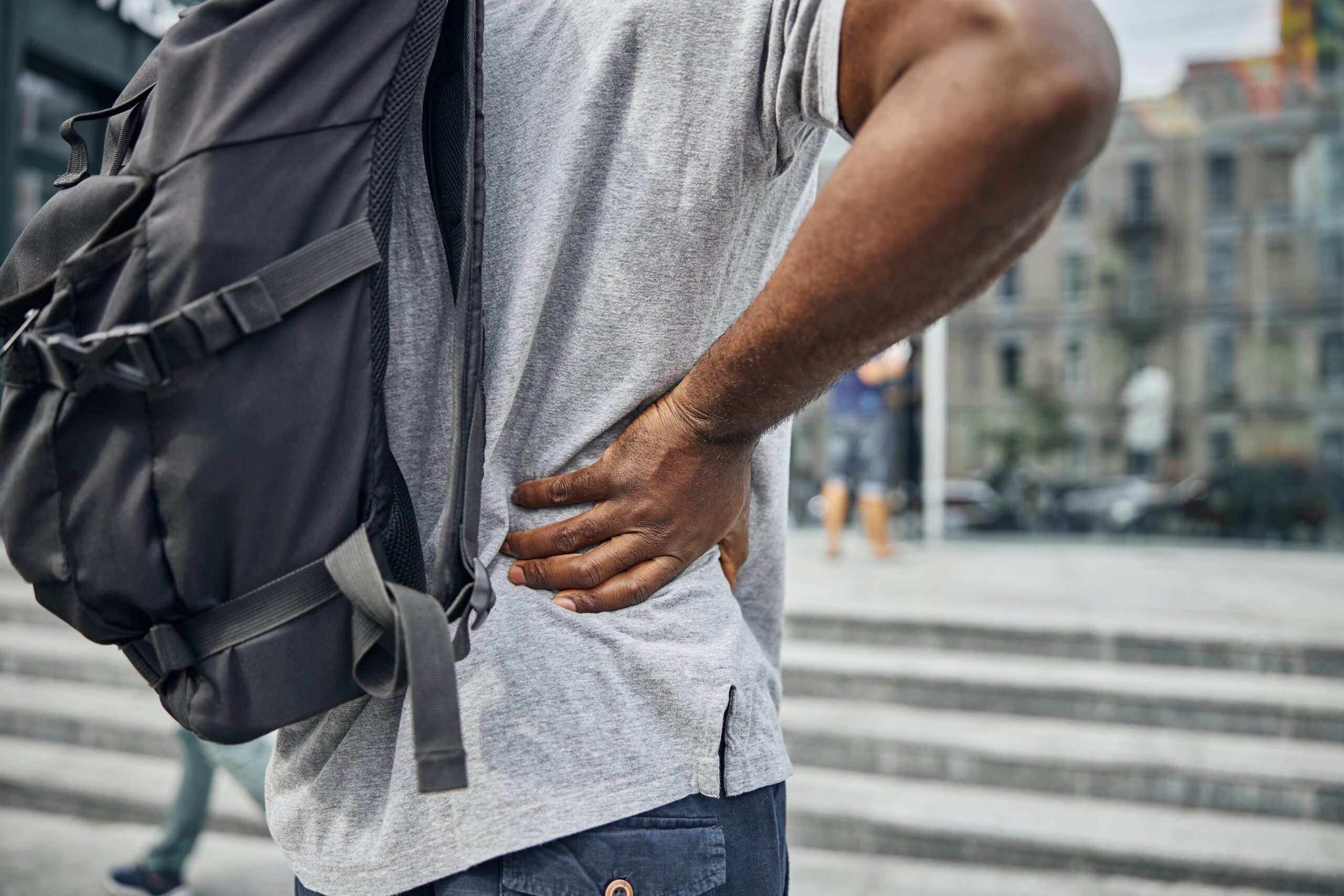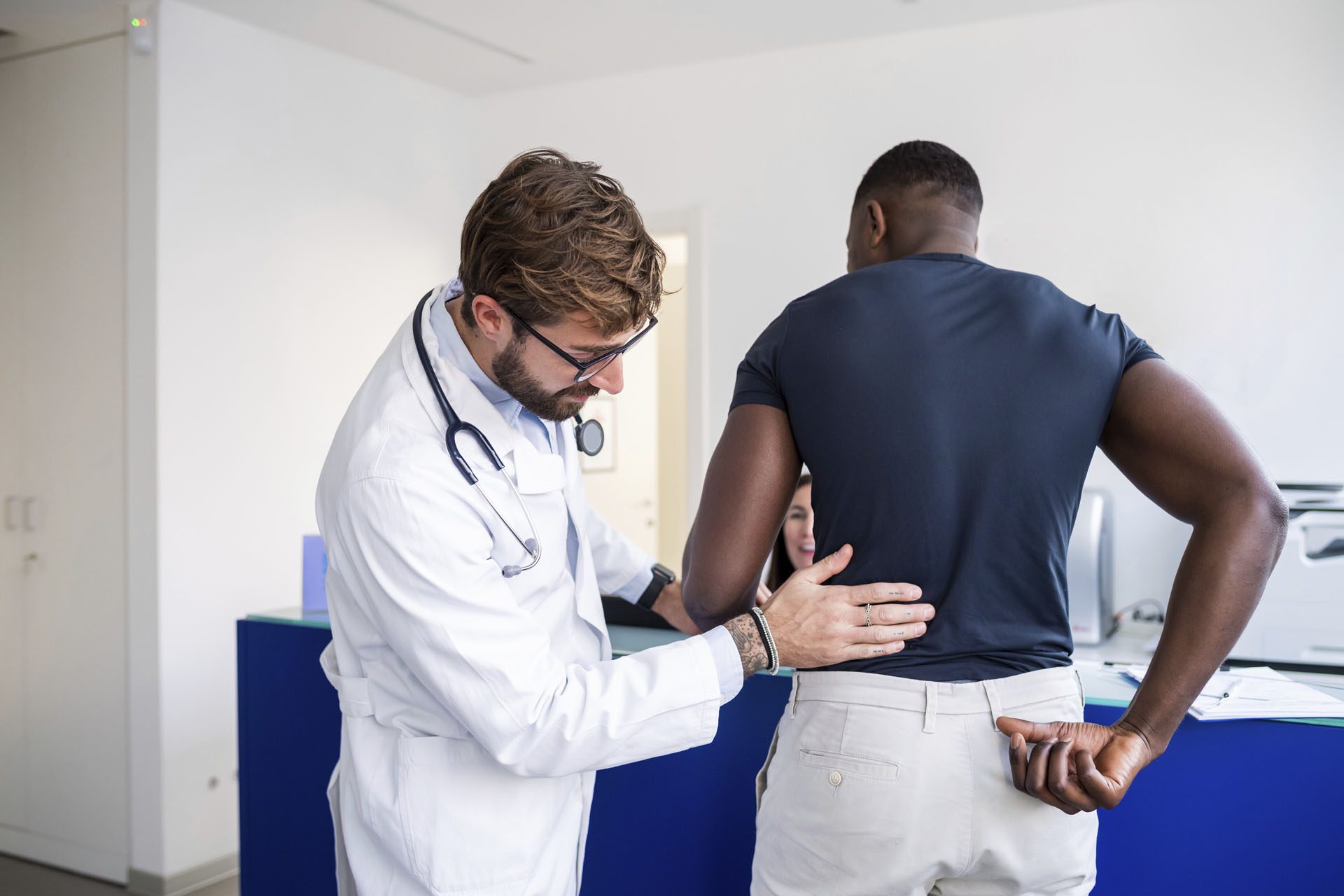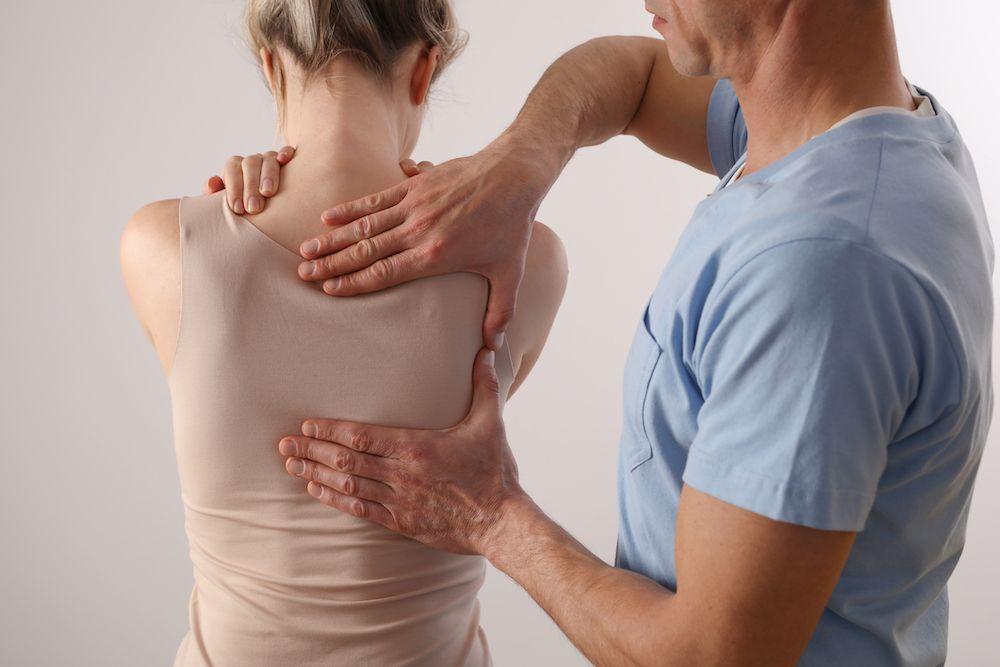Chiropractic Care On The Immune System and Overall Health
Uncover the role of chiropractic care benefits the immune system by improving your health and enhancing immunity.
Unlocking the Power of Chiropractic Care: A Holistic Approach to Musculoskeletal Pain, Immune Health, and Scoliosis Management
Picture your spine as the trusty backbone of your body’s skyscraper—keeping you upright, mobile, and ready to take on the world. Now, imagine it throwing a temper tantrum, causing pain, stiffness, or even sabotaging your immune system like a grumpy coworker stealing your lunch. At ChiroMed – Integrated Medicine in El Paso, TX, Dr. Alexander Jimenez, DC, APRN, FNP-BC, is the master of musculoskeletal harmony, utilizing chiropractic care, advanced diagnostics, and a touch of holistic expertise to restore your body’s balance. Think of him as the conductor of your health orchestra, ensuring every note hits just right.
In this 5,000+ word guide, we’ll explore why chiropractic care is a game-changer for musculoskeletal pain, how it boosts your immune system, and why it’s a superhero for conditions like scoliosis. We’ll also dive into Dr. Jimenez’s expertise in personal injury cases, where he bridges the gap between medical care and legal documentation with the precision of a tightrope walker. Plus, we’ll share practical tips to keep your spine happy and your immune system ready to fend off germs. So, grab a seat (one that doesn’t make your back groan), and let’s dive into the world of spinal health with a touch of humor to keep things light!
The Musculoskeletal System: Your Body’s Framework and Why It Matters
Your musculoskeletal system is like the scaffolding of a construction site—it holds everything together, supports your movements, and protects your vital organs. Made up of bones, muscles, ligaments, tendons, and connective tissues, it’s the unsung hero that lets you dance, lift groceries, or even scroll through your phone for hours (we won’t judge). But when things go wrong, like a misaligned spine or a pulled muscle, it’s like your body’s scaffolding starts wobbling, leading to pain and a whole lot of grumbling.
What Causes Musculoskeletal Pain?
Musculoskeletal pain can creep up on you like a ninja in a bad mood. Here are some common culprits:
- Injuries: From car accidents to tripping over your dog’s toy, trauma can cause sprains, strains, or fractures that leave you wincing (Jimenez, 2023a).
- Poor Posture: Slouching at your desk or hunching over your phone is like asking your spine to carry a backpack full of bricks—eventually, it protests (Jimenez, 2023b).
- Repetitive Stress: Performing the same motion repeatedly, such as typing or lifting heavy boxes, can cause muscle and joint fatigue, leading to chronic pain (Gellman, 2020).
- Scoliosis: This condition, where your spine curves sideways like a rogue rollercoaster, can create uneven pressure on muscles and joints, causing discomfort (York & Kim, 2017).
- Viscerosomatic Issues: Sometimes, your organs send distress signals that manifest as musculoskeletal pain, like a stomachache causing back pain—talk about a communication mix-up (Jimenez, 2025a).
When your musculoskeletal system is out of alignment, it doesn’t just cause pain—it can mess with your nervous system, which is like the body’s Wi-Fi router. A bad connection here can lead to a cascade of issues, including a weakened immune system, because your body’s too busy dealing with pain to fight off germs.
References
- Gellman, H. (2020). Chronic musculoskeletal pain: Nonpharmacologic, noninvasive treatments. American Family Physician, 102(8), 465–470. https://pubmed.ncbi.nlm.nih.gov/32204518/
- Jimenez, A. (2023a). From injury to recovery with chiropractic care. Personal Injury Doctors. https://personalinjurydoctorgroup.com
- Jimenez, A. (2023b). Posture, sports training, and integrative care. Sciatica Pain and Treatment Clinic. https://sciatica.clinic
- Jimenez, A. (2025a). Chiropractic Care: Pain Relief Options for Scoliosis. ChiroMed – Integrated Medicine. https://chiromed.com
- York, P. J., & Kim, H. J. (2017). Degenerative scoliosis. Current Reviews in Musculoskeletal Medicine, 10(4), 547–558. https://pubmed.ncbi.nlm.nih.gov/38776317/
The Immune System Connection: How Your Spine Keeps Germs at Bay
You might be thinking, “My spine and my immune system? What’s the connection—do they go to the same yoga class?” Well, they’re more like best friends who rely on each other to function. Your spine houses the spinal cord, a key player in your nervous system, which sends signals to every part of your body, including your immune system. When your spine is misaligned (a condition called subluxation), it’s like your nervous system’s Wi-Fi signal dropping, leaving your immune system struggling to get the memo to fight off invaders.
The Science Behind It
Research shows that spinal misalignments can increase stress hormones, such as cortisol, which can suppress the immune system, making individuals more prone to colds, flu, or feeling as though they are moving in slow motion (El Paso Chiropractor Blog, 2016). Chronic pain or poor posture can also trigger inflammation, which is like your body’s alarm system blaring 24/7. This chronic inflammation can weaken your immune response, leaving you vulnerable to infections and slowing your healing process (Gellman, 2020).
Chiropractic adjustments help by correcting subluxations, reducing nerve irritation, and lowering stress hormones. This allows your immune system to focus on battling germs instead of dealing with internal drama. A 2016 blog post from El Paso Chiropractor highlights how chiropractic care can boost immunity naturally by improving nervous system function, increasing blood flow, and reducing inflammation (El Paso Chiropractor Blog, 2016). It’s like giving your immune system a power-up in a video game!
Viscerosomatic Issues: When Your Organs and Muscles Play Telephone
Viscerosomatic pain is like a game of telephone gone wrong—your organs send a distress signal, but your muscles and joints end up feeling the pain. For example, a problem in your gut might cause back pain, or a stressed liver might lead to shoulder discomfort. These issues arise because the nervous system connects your organs and musculoskeletal system, and any disruption can create a confusing web of symptoms (Jimenez, 2025a). Chiropractic care can help by addressing spinal misalignments that may contribute to these viscerosomatic disturbances, restoring balance and reducing pain.
References
- El Paso Chiropractor Blog. (2016). Boost your immunity naturally. https://www.elpasochiropractorblog.com/2016/05/boost-your-immunity-naturally.html
- Gellman, H. (2020). Chronic musculoskeletal pain: Nonpharmacologic, noninvasive treatments. American Family Physician, 102(8), 465–470. https://pubmed.ncbi.nlm.nih.gov/32204518/
- Jimenez, A. (2025a). Chiropractic Care: Pain Relief Options for Scoliosis. ChiroMed – Integrated Medicine. https://chiromed.com
Scoliosis: The Spine’s Sneaky Curve and How to Tame It
Scoliosis is like your spine deciding to take a scenic detour instead of sticking to the straight path. This condition, characterized by the spine curving sideways in an “S” or “C” shape, affects approximately 2-3% of people and can range from mild to severe (York & Kim, 2017). While some folks with scoliosis live pain-free, others deal with chronic discomfort, muscle imbalances, and even breathing issues because of the spine’s funky curvature. It’s like your spine decided to audition for a modern art exhibit!
How Scoliosis Impacts the Musculoskeletal System
Scoliosis doesn’t just give your spine a quirky shape—it can throw your entire musculoskeletal system into chaos. Here’s how:
- Uneven Pressure: The spine’s curve puts extra stress on one side of the body, leading to tight muscles, strained joints, and pain (York & Kim, 2017).
- Postural Problems: Scoliosis can make your shoulders, hips, or ribs look lopsided, making you feel like you’re perpetually leaning like the Tower of Pisa (Jimenez, 2025a).
- Nerve Compression: A curved spine can pinch nerves, causing pain, numbness, or weakness in your back, legs, or arms (Jimenez, 2023a).
- Viscerosomatic Effects: Misalignment of the spine can disrupt nerve signals to organs, potentially causing issues such as digestive problems or chronic fatigue (Jimenez, 2025a).
If left unchecked, scoliosis can increase the risk of chronic pain, reduced mobility, and even heart or lung issues in severe cases. But fear not—chiropractic care and other non-surgical treatments can help keep that curve from running the show!
Chiropractic Care for Scoliosis
Dr. Alexander Jimenez and his team at ChiroMed are like the spine whisperers of El Paso, utilizing a blend of chiropractic adjustments, functional rehabilitation, and lifestyle modifications to manage scoliosis symptoms and enhance spinal health. Here’s their game plan:
- Spinal Adjustments: Gentle, targeted adjustments correct misalignments, reduce nerve compression, and improve spinal mobility (Jimenez, 2025a).
- Functional Strength Training: Tailored exercises strengthen the muscles supporting your spine, helping to balance the uneven pressure caused by scoliosis (Jimenez, 2023a).
- Nutritional Support: A diet rich in anti-inflammatory foods, such as fruits, vegetables, and omega-3 fatty acids, can help reduce pain and support overall health, which is crucial for managing scoliosis (El Paso Chiropractor Blog, 2016).
- Posture Training: Dr. Jimenez’s team teaches you how to sit, stand, and move in ways that minimize strain on your spine, like training your body to be a posture pro (Jimenez, 2023b).
Research supports the use of chiropractic care for scoliosis, demonstrating that it can reduce pain and improve function without the need for surgery (Morningstar et al., 2017). By addressing the root causes of scoliosis-related pain, Dr. Jimenez helps patients move better, feel better, and live better.
References
- Jimenez, A. (2023a). From injury to recovery with chiropractic care. Personal Injury Doctors. https://personalinjurydoctorgroup.com
- Jimenez, A. (2023b). Posture, sports training, and integrative care. Sciatica Pain and Treatment Clinic. https://sciatica.clinic
- Jimenez, A. (2025a). Chiropractic Care: Pain Relief Options for Scoliosis. ChiroMed – Integrated Medicine. https://chiromed.com
- Morningstar, M. W., Woggon, D., & Lawrence, D. (2017). Chiropractic management of adolescent idiopathic scoliosis: A literature review. Journal of Chiropractic Medicine, 16(2), 121–126. https://pubmed.ncbi.nlm.nih.gov/28667551/
- York, P. J., & Kim, H. J. (2017). Degenerative scoliosis. Current Reviews in Musculoskeletal Medicine, 10(4), 547–558. https://pubmed.ncbi.nlm.nih.gov/38776317/
Aligned & Empowered: Chiropractic Conversations on Women’s Health- Video
Personal Injury Cases: Dr. Jimenez’s Expertise in El Paso
If you’ve ever been in a fender-bender or slipped on a rogue banana peel, you know personal injuries can turn your life upside down faster than you can say “ouch.” In El Paso, Dr. Alexander Jimenez is the go-to practitioner for personal injury victims, blending his chiropractic expertise with his skills as a Family Nurse Practitioner to provide top-notch care (Jimenez, 2025b). He’s like the Sherlock Holmes of injuries, solving the mystery of your pain with precision and care.
How Dr. Jimenez Helps Personal Injury Victims
Dr. Jimenez uses advanced imaging (like MRIs and X-rays) and diagnostic evaluations to get to the root of your injury, whether it’s whiplash, a sprain, or soft tissue damage. His dual-scope approach—combining chiropractic care with medical expertise—sets him apart. Here’s how he does it:
- Accurate Diagnosis: Advanced imaging, such as computed tomography (CT) scans, pinpoints fractures, soft tissue injuries, or nerve compression that might be missed by less thorough exams (Jimenez, 2023a).
- Tailored Treatment Plans: From spinal adjustments to physical therapy and nutritional counseling, Dr. Jimenez creates plans that address both symptoms and underlying causes (Jimenez, 2025a).
- Legal-Medical Liaison: Personal injury cases often involve insurance claims or legal battles. Dr. Jimenez provides detailed medical documentation to support your case, ensuring your injuries are properly represented (Jimenez, 2025b).
His work at ChiroMed and the El Paso Back Clinic has earned him rave reviews, with patients praising his ability to help them recover from injuries such as whiplash, back pain, and other conditions (Jimenez, 2023c). A 2023 patient testimonial video showcases how Dr. Jimenez’s care has helped everyone from athletes to accident victims get back on their feet (Jimenez, 2023c).
References
- Jimenez, A. (2023a). From injury to recovery with chiropractic care. Personal Injury Doctors. https://personalinjurydoctorgroup.com
- Jimenez, A. (2023c). Real patients, real results: Chiropractic care. El Paso, TX, Doctor of Chiropractic. https://dralexjimenez.com
- Jimenez, A. (2025a). Chiropractic Care: Pain Relief Options for Scoliosis. ChiroMed – Integrated Medicine. https://chiromed.com
- Jimenez, A. (2025b). Dr. Alexander Jimenez, DC, APRN, FNP-BC, IFMCP, CFMP, ATN. LinkedIn. https://www.linkedin.com/in/dralexjimenez/
Small Changes, Big Impact: Lifestyle Tips for Better Spinal and Immune Health
You don’t need to become a health guru overnight to support your spine and immune system—just a few tweaks can make a big difference. Here are some practical tips inspired by Dr. Jimenez’s clinical insights:
- Fix Your Posture: Think of your spine as a stack of pancakes—keep it straight to avoid squishing the syrup out! Sit up tall, keep your shoulders back, and avoid hunching over your phone (Jimenez, 2023b).
- Move Regularly: A quick walk or stretch break every hour keeps your joints limber and your blood flowing, supporting both your spine and immune system (El Paso Chiropractor Blog, 2016).
- Eat Anti-Inflammatory Foods: Load up on fruits, veggies, and omega-3-rich foods like salmon to reduce inflammation and boost immunity (El Paso Chiropractor Blog, 2016).
- Stay Hydrated: Your spinal discs require water to remain cushioned and flexible, so drink up to keep your spine healthy (Jimenez, 2025a).
- Get Adjusted: Regular chiropractic visits keep your spine aligned, reduce pain, and boost your immune system by improving nervous system function (El Paso Chiropractor Blog, 2016).
These small changes can help you dodge musculoskeletal pain and keep your immune system ready to fend off any germs that come your way.
References
- El Paso Chiropractor Blog. (2016). Boost your immunity naturally. https://www.elpasochiropractorblog.com/2016/05/boost-your-immunity-naturally.html
- Jimenez, A. (2023b). Posture, sports training, and integrative care. Sciatica Pain and Treatment Clinic. https://sciatica.clinic
- Jimenez, A. (2025a). Chiropractic Care: Pain Relief Options for Scoliosis. ChiroMed – Integrated Medicine. https://chiromed.com
The Science Behind Chiropractic Care: Why It Works
Chiropractic care isn’t just about cracking backs—it’s a science-backed approach to improving your health. Here’s why it works for musculoskeletal pain, immune health, and conditions like scoliosis:
- Reduces Nerve Compression: Adjustments correct spinal misalignments, relieving pressure on nerves and reducing pain (Morningstar et al., 2017).
- Lowers Inflammation: By improving spinal alignment, chiropractic care can reduce inflammatory markers, helping with pain and supporting immune function (Roy et al., 2019).
- Enhances Nervous System Function: A healthy spine ensures clear communication between your brain and body, which is crucial for immune response and overall health (El Paso Chiropractor Blog, 2016).
- Improves Mobility: Chiropractic adjustments and functional exercises restore joint mobility, making it easier to move without pain (Jimenez, 2023a).
Studies such as those by Roy et al. (2019) and Morningstar et al. (2017) demonstrate that chiropractic care can significantly reduce pain and improve function in patients with scoliosis and other musculoskeletal conditions. Dr. Jimenez’s integrative approach takes this further by combining chiropractic care with functional medicine, nutrition, and rehabilitation for a holistic solution.
References
- El Paso Chiropractor Blog. (2016). Boost your immunity naturally. https://www.elpasochiropractorblog.com/2016/05/boost-your-immunity-naturally.html
- Jimenez, A. (2023a). From injury to recovery with chiropractic care. Personal Injury Doctors. https://personalinjurydoctorgroup.com
- Morningstar, M. W., Woggon, D., & Lawrence, D. (2017). Chiropractic management of adolescent idiopathic scoliosis: A literature review. Journal of Chiropractic Medicine, 16(2), 121–126. https://pubmed.ncbi.nlm.nih.gov/28667551/
- Roy, R. A., Boucher, J. P., & Comtois, A. S. (2019). Inflammatory response following a short-term course of chiropractic treatment in patients with chronic low back pain. Journal of Chiropractic Medicine, 18(2), 83–91. https://pubmed.ncbi.nlm.nih.gov/33847753/
Why Choose ChiroMed – Integrated Medicine?
At ChiroMed, you’re not just a patient—you’re a partner in your health journey. Dr. Jimenez and his team offer a unique blend of chiropractic care, nurse practitioner services, naturopathy, rehabilitation, nutrition counseling, and acupuncture, all tailored to your needs. Their clinic feels more like a cozy wellness center than a cold medical office, and their licensed therapists are dedicated to helping you achieve your goals (Jimenez, 2023d).
Whether you’re managing scoliosis, recovering from a personal injury, or just want to boost your immune system, ChiroMed’s integrative approach ensures you get the best of both conventional and alternative medicine. Additionally, with Dr. Jimenez’s expertise in legal-medical liaison work, personal injury victims can trust that their care and documentation are in the hands of an expert.
References
- Jimenez, A. (2023d). ChiroMed – Integrated Medicine, holistic healthcare in El Paso, TX. ChiroMed – Integrated Medicine. https://chiromed.com
Conclusion: A Serious Note on Your Health
The journey through spinal health, immune system support, and scoliosis management may have been sprinkled with humor, but the importance of addressing these issues is no laughing matter. Your spine is the foundation of your body, and maintaining its health is crucial for pain-free living and a robust immune system. At ChiroMed – Integrated Medicine, Dr. Alexander Jimenez offers evidence-based chiropractic care, advanced diagnostics, and a holistic approach to help you manage musculoskeletal pain, scoliosis, and personal injuries. For those in El Paso dealing with personal injury cases, his expertise as a legal-medical liaison ensures comprehensive care and proper documentation.
Disclaimer: The information in this blog post is not intended to replace a one-on-one relationship with a qualified healthcare professional or licensed physician and is not medical advice. We encourage you to make healthcare decisions based on your research and partnership with a qualified healthcare professional. For personalized care, contact ChiroMed – Integrated Medicine at 915-412-6680 or via email at support@chiromed.com to schedule a consultation with Dr. Jimenez and his team.
Full Reference List
- El Paso Chiropractor Blog. (2016). Boost your immunity naturally. https://www.elpasochiropractorblog.com/2016/05/boost-your-immunity-naturally.html
- Gellman, H. (2020). Chronic musculoskeletal pain: Nonpharmacologic, noninvasive treatments. American Family Physician, 102(8), 465–470. https://pubmed.ncbi.nlm.nih.gov/32204518/
- Jimenez, A. (2023a). From injury to recovery with chiropractic care. Personal Injury Doctors. https://personalinjurydoctorgroup.com
- Jimenez, A. (2023b). Posture, sports training, and integrative care. Sciatica Pain and Treatment Clinic. https://sciatica.clinic
- Jimenez, A. (2023c). Real patients, real results: Chiropractic care. El Paso, TX, Doctor of Chiropractic. https://dralexjimenez.com
- Jimenez, A. (2023d). ChiroMed – Integrated Medicine, holistic healthcare in El Paso, TX. ChiroMed – Integrated Medicine. https://chiromed.com
- Jimenez, A. (2025a). Chiropractic Care: Pain Relief Options for Scoliosis. ChiroMed – Integrated Medicine. https://chiromed.com
- Jimenez, A. (2025b). Dr. Alexander Jimenez, DC, APRN, FNP-BC, IFMCP, CFMP, ATN. LinkedIn. https://www.linkedin.com/in/dralexjimenez/
- Morningstar, M. W., Woggon, D., & Lawrence, D. (2017). Chiropractic management of adolescent idiopathic scoliosis: A literature review. Journal of Chiropractic Medicine, 16(2), 121–126. https://pubmed.ncbi.nlm.nih.gov/28667551/
- Roy, R. A., Boucher, J. P., & Comtois, A. S. (2019). Inflammatory response following a short-term course of chiropractic treatment in patients with chronic low back pain. Journal of Chiropractic Medicine, 18(2), 83–91. https://pubmed.ncbi.nlm.nih.gov/33847753/
- York, P. J., & Kim, H. J. (2017). Degenerative scoliosis. Current Reviews in Musculoskeletal Medicine, 10(4), 547–558. https://pubmed.ncbi.nlm.nih.gov/38776317/








